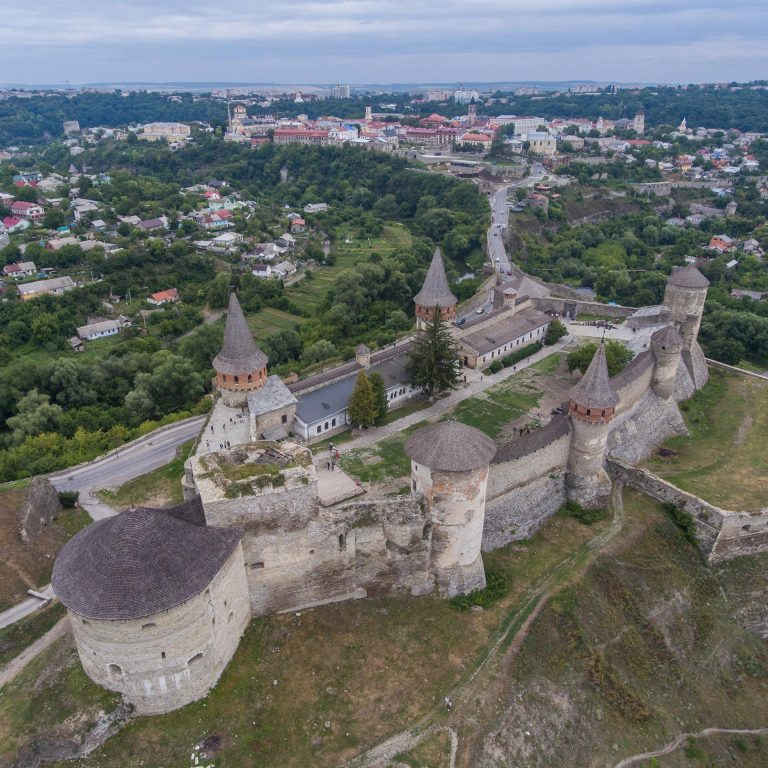Kamianets-Podilskyi fortress is one of the most popular attractions of Podillia. It is in the last several years that the fortress has begun to change and to return to life. Kamianets-Podilskyi castle has turned from a regular museum complex into a living organism, where various craftsmen are occupied with traditional crafts, such as archery, pottery, carving and bread making according to traditional recipes. The historical reconstruction breathed a new life into this construction, while the visitors got an opportunity not just to see the history, but to dive into it for a short while.
Historical reconstruction is the process of recreation of a culture of its epoch and region. To achieve this, researchers read archives, look through pictures and analyze archeological findings. Through scientific experiments and gaming techniques, the recreators come as close as possible to the primary look of the things or traditions of the epoch being researched.
For example, clothing recreators sew by hand the garments worn by the XVII century inhabitants of Kamianets-Podilskyi. Bakers make bread following the old recipes, while potters shape clay the way it was done hundreds of years ago.
The public organization “Kamianets-Podilskyi City Military and Historical Community” has been around for 20 years now. It includes all of the recreators of Kamianets-Podilskyi fortress. Its members are engaged in studying and the popularization of history, mainly the past of Podillia and Kamianets-Podilskyi. The fortress’s director, Oleksandr Zaremba (aka Haiduk), believes that they must talk about the city as much as possible, for it served as the last capital of the Ukrainian National Republic. In 1919-1920, Kamianets-Podilskyi found itself in a position previously held by Kharkiv and Kyiv for some time. As a matter of fact, the eponymous festival, “The Last Capital”, is held annually in August.
There are disputes to this day as to when the fortress was built. The first references date back to 1374, when the city received the Magdeburg rights. However, archeological research shifted the timeline of the fortress two centuries back.
The fortress is surrounded by a canyon, at the bottom of which flows the river Smotrych. Rounding the island as a loop, it creates incredible scenery. Due to this favorable situation, the Kamianets-Podilskyi fortress is considered to be one of the most impregnable fortresses on the territory of modern Ukraine. It was taken only twice in history — a fact that gives the Kamianets-Podilskyi residents great pride in their past.
What goes on in the fortress today? What kind of people make its modern history and recreate the past? In Kamianets-Podilskyi, you can spend more than just a day: don’t stop at a visit to the fortress, but look around and acknowledge its recreators, historians and people truly in love with the history of their homeland.
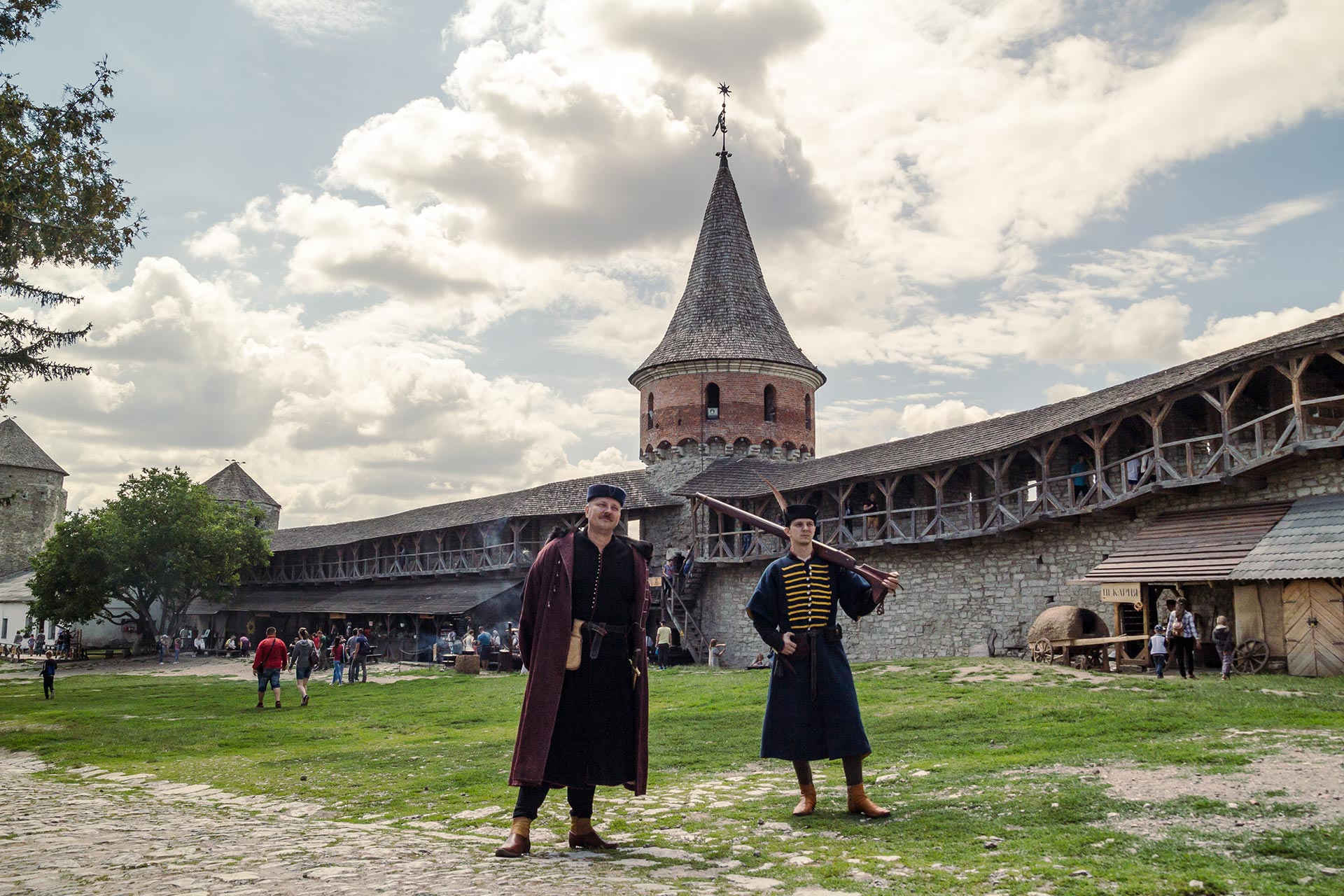
Oleksandr Zaremba
Ever since he was a child, Oleksandr took great interest in history, and now he takes part in its restoration. He began his journey into the world of historical memorial and way of life restoration with the book “The Books of Future Commanders” by Anatoliy Mytiaiev. Later he wanted to put what he read into practice, and so he moved on to modelling.
modelling
Сreative design, testing and use of engineering models.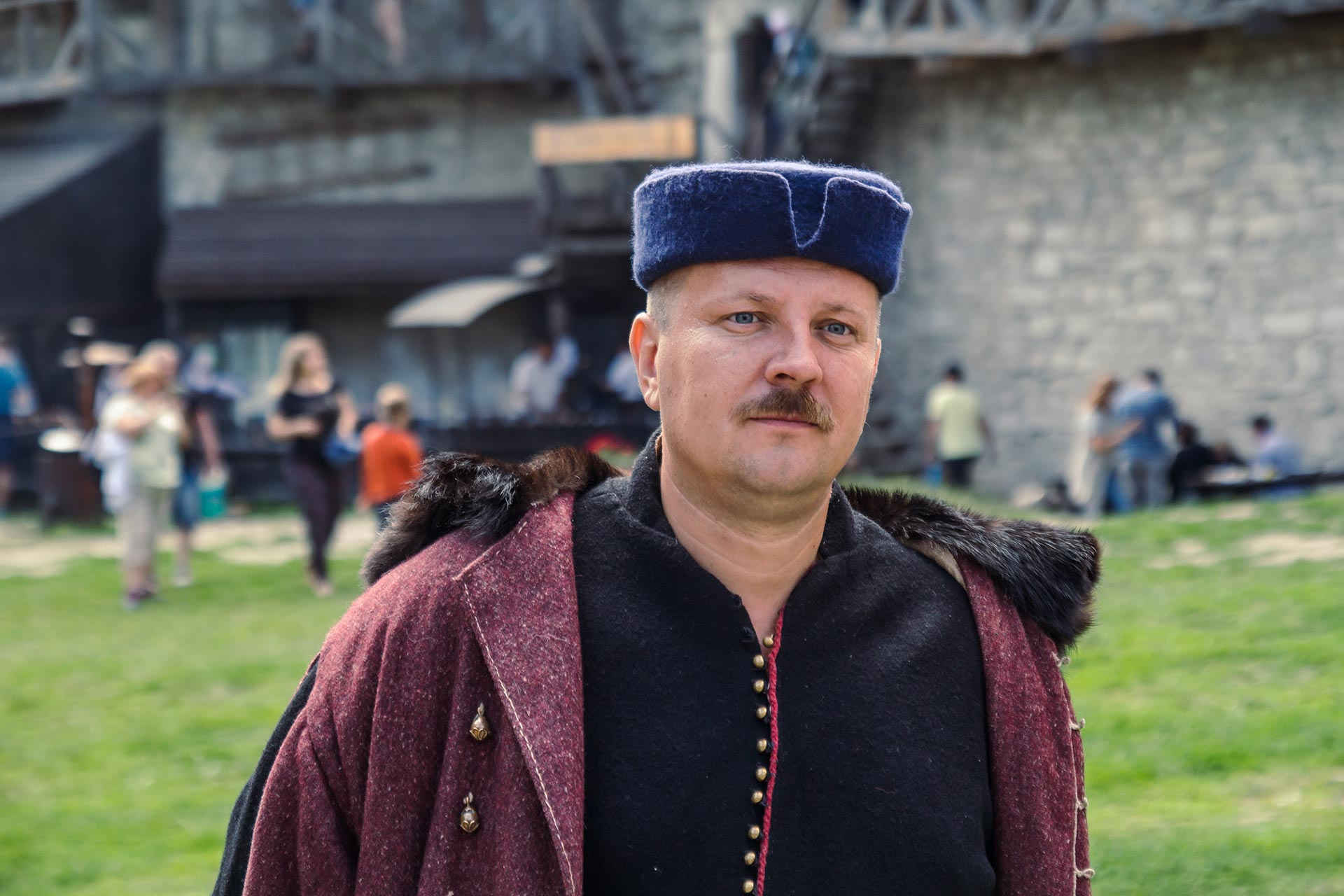
The next step is military and historical reenactment, which enjoys high popularity worldwide and in Ukraine in particular. Nowadays, Oleksandr Zoremba works as the director of Kamianets-Podilskyi fortress.
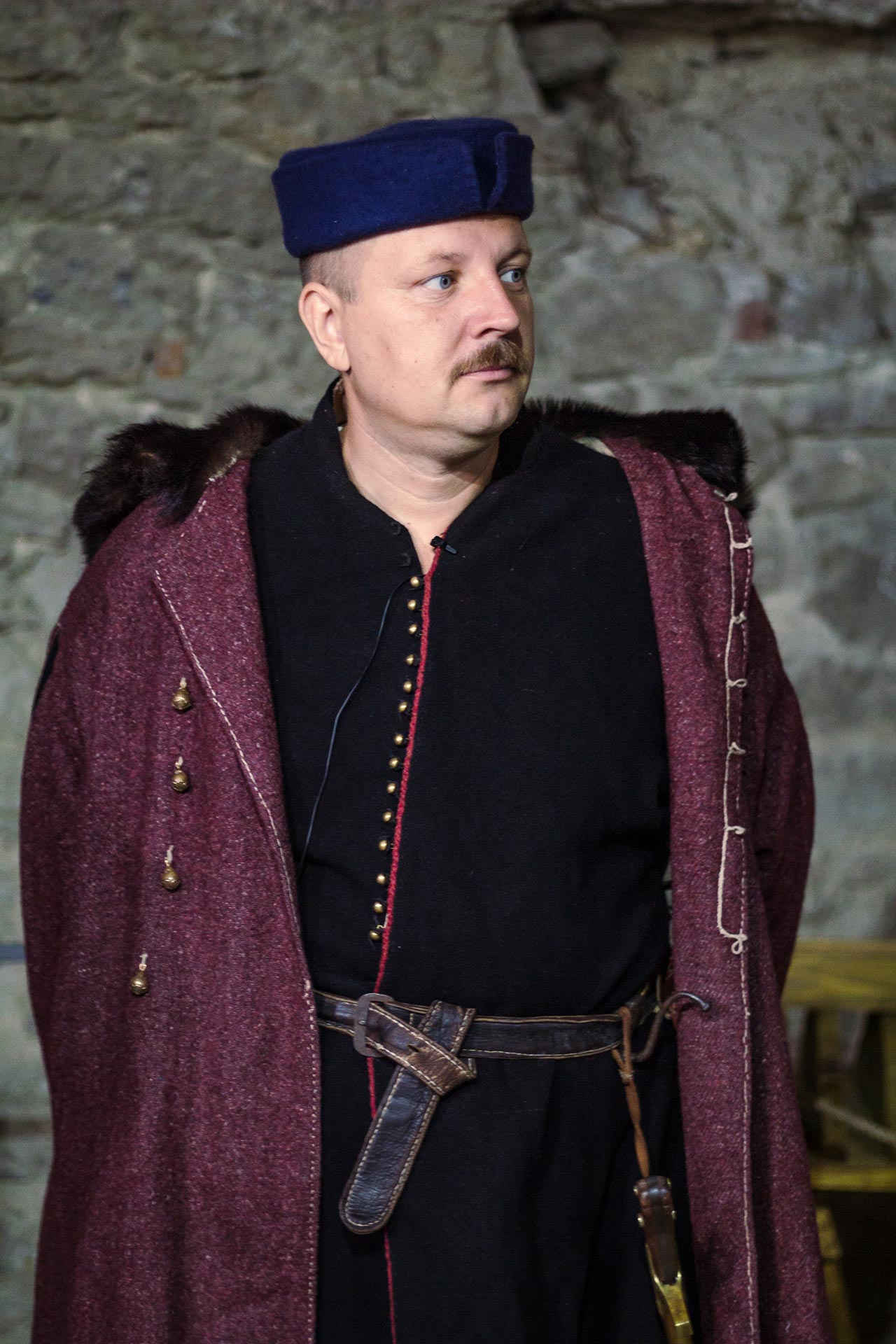
At the moment, Oleksandr works a XVII century reenactment. He laments that the reenactment doesn’t reach its full potential in popularizing the work. For example, interactive guided tours in full costume or mock-ups and models could have attracted the attention of a much larger audience to the museum.
A delia is a winter coat worn over one’s shoulders. By the decree of Stephen Bathory, the delia’s color should be blue, and the embroidery (or potreby, as they are also called in Polish) variwed with the region. In Podillia province they were yellow.
And a musket is a firearm, also called hakivnytsia in Ukraine. A hakivnytsia consists of a closed from one side luffa (gun barrel — author), a breech block that let a spark into the luffa, and a trigger connected to a fuse. Muskets were in use until the end of the seventeenth century, when they were replaced by flintlock guns.
— Imagine the stereotypes of an early twenty-first-century person, whenever they hear something about Cossacks. No doubt they would think of a guy in red high boots, wide trousers (sharovary) and an embroidered shirt. We want to change this stereotype a little bit and show that there’s more to Ukrainians than this.
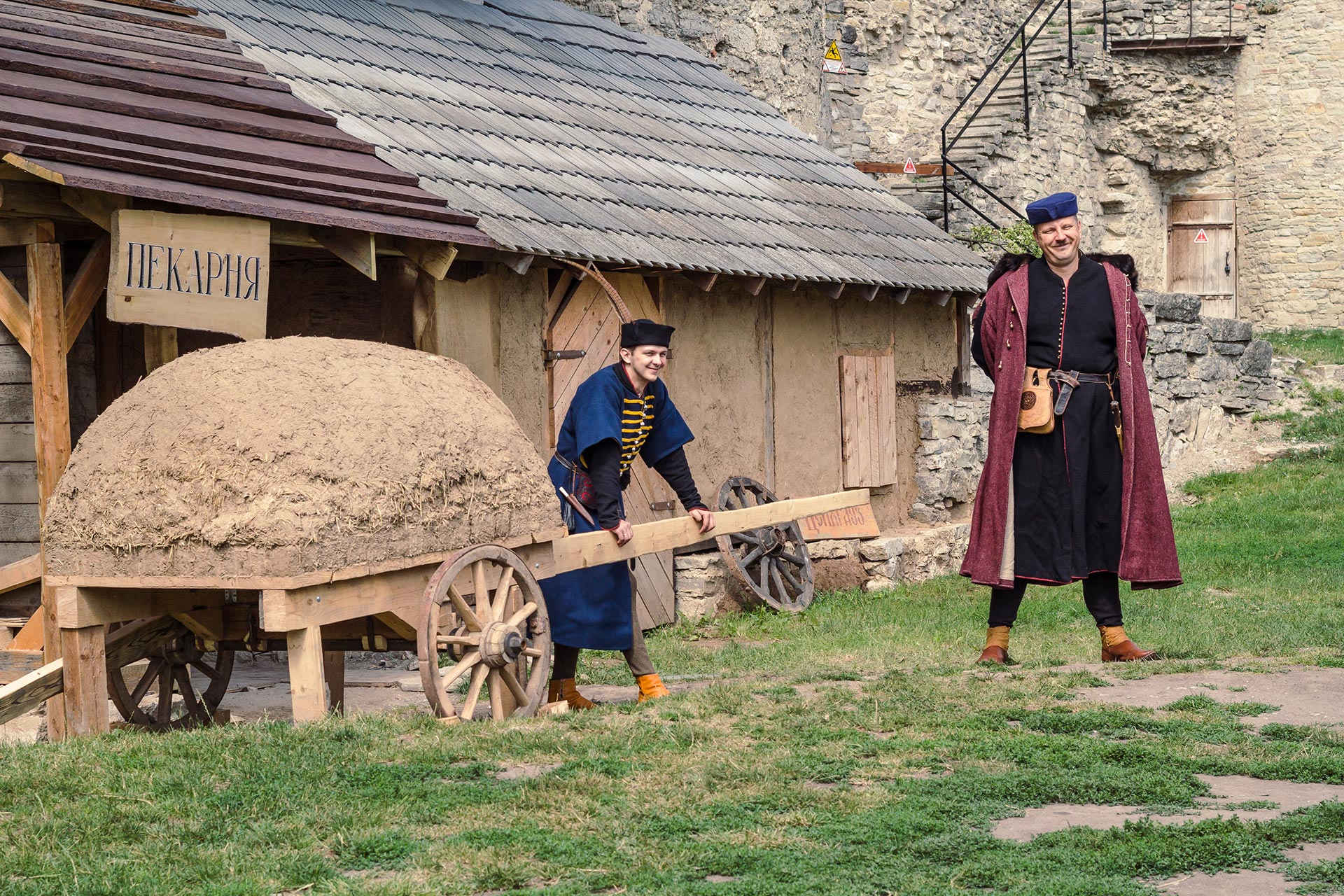
Oleksandr tells that the biggest problem in reenactment lies in the absence of a clear understanding of how to work. He believes that the opportunity for tourism and education to change cities and regions isn’t obvious to Ukrainians. Together with his colleagues, he runs the School of Reenactment project, sharing trends and opportunities, as well as encouraging people to join the effort. The Living Fortress project launched in the fortress six years ago. As part of it, craftsmen would show off their crafts, hold masterclasses and perform reenactments.
— Here in Ukraine, there’s a lack of understanding of the difference between living history and a carnival spectacle. That’s what often offends reenactors, because you spend a lot of time and effort to research the history of an outfit, to recreate something according to historical analogues. And then it’s just lumped together with a carnival costume or something. These things are nothing alike. We know it but most others don’t.
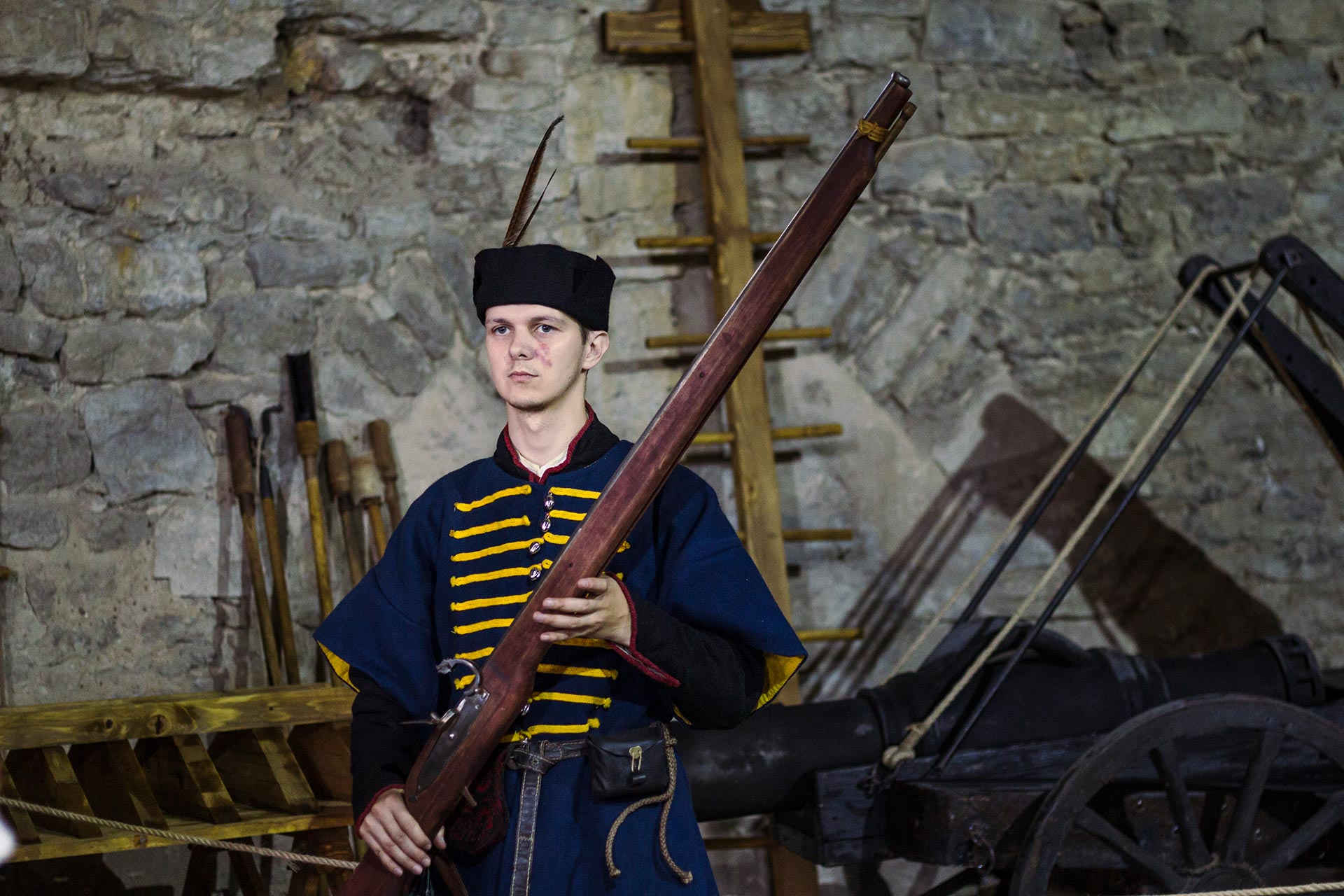
According to Oleksandr, the number of tourists has grown almost tenfold over the past 20 years. Given this popularity of a tourist object, museum researchers care more about the prosperity of the fortress and its actual reconstruction. Rains, slope erosion and the resulting deterioration of castle walls. However, the work goes on, as tourists come to Kamianets-Podilskyi and expect a living history brought to life.
— We are inspired by a saying credited to Churchill. To be honest, I haven’t found the primary source, but I do believe that when he was asked to cut arts funding during the war, he replied ‘if we cut funding for the arts, then what are we fighting for?
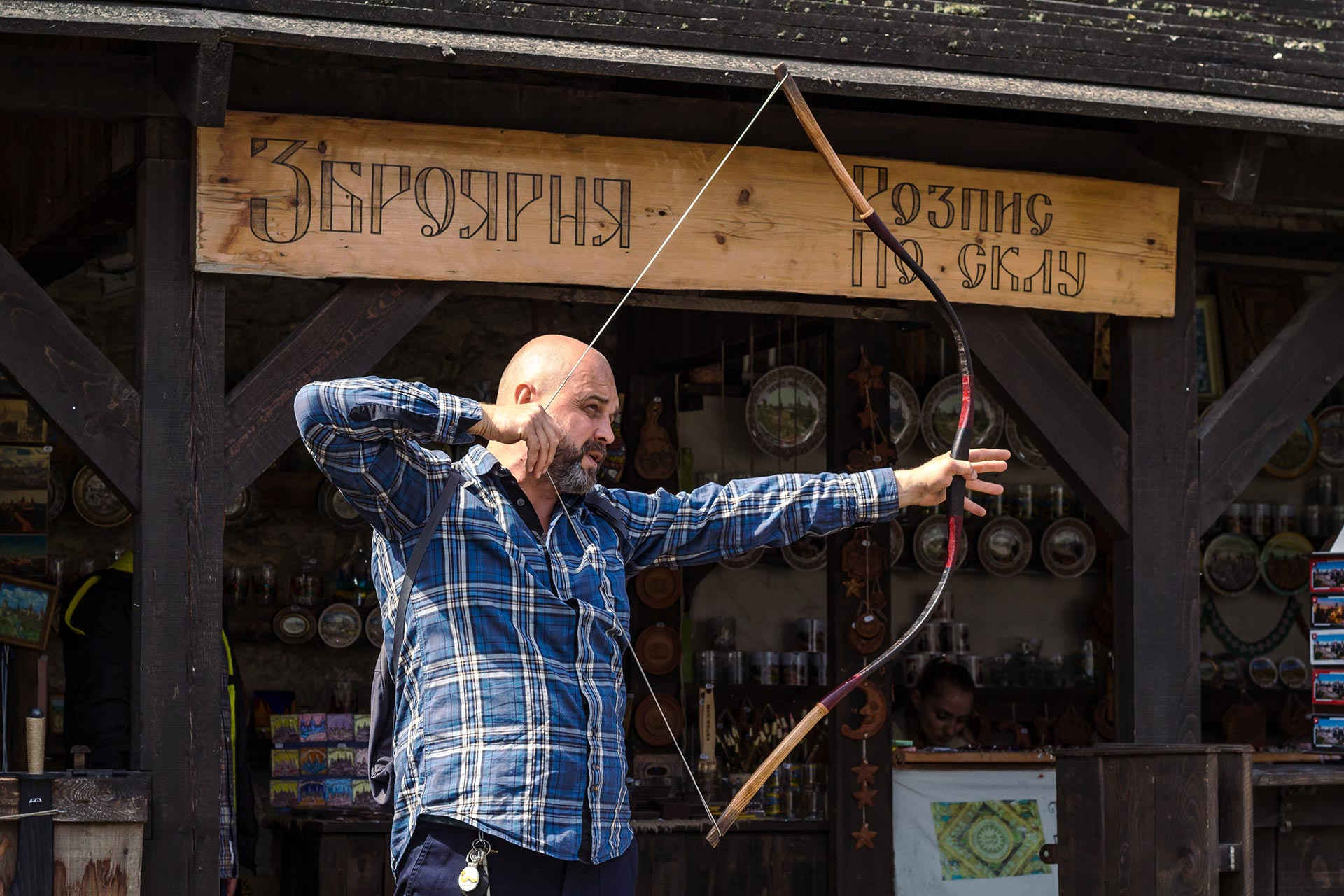
Ihor Chesnivsky
Ihor Chesnivsky takes part in seventeenth-century reenactment. Together with his colleagues, he makes traditional bows of that period, recreates garments and educates people. Ukraine doesn’t have mass events that delve into traditional archery and popularize this art and sport. However, Ihor is one of the organizers of the annual international traditional archery tournament “Stone Arrow” in Kamianets-Podilskyi. In a sense, the city itself inspires such endeavours.
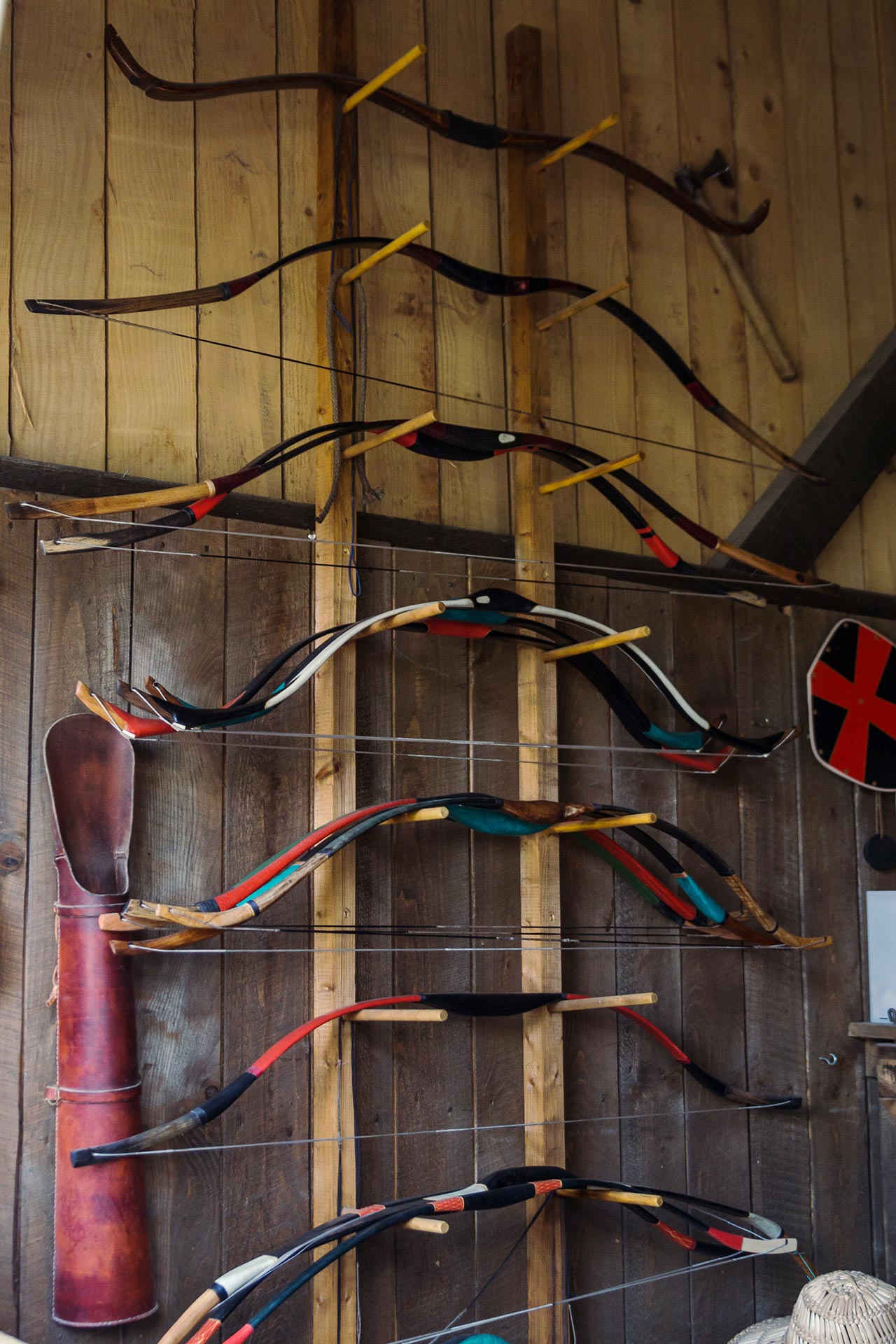
Ihor says that he made his first bow as a child. The product ended up quite complex; his grandfather still keeps it in the arsenal. The process of making bows is neverending — the longer you live, the more you learn and start to see what other improvements can be made.
Today, bows are made from carbon or wood, but the aesthetics and shape remain true to a specific region’s traditions. Every bow is drawn with different force, meaning that arrows must be selected for each bow individually too. If the arrow is too hard, it can spring from the bowstring (a cord that tightens the ends of the bow — author) and fly off-target, depending on how you hold the bow in your hands and how you aim it.
Ihor talks a lot about Turkish, Tatar and European traditions of making bows. Now and then, he’ll mention Ukrainian traditions too, but stops immediately. Cossaks mostly used bows not of their own making, and archeological findings support that. Scythian bows survive until the present day, but they can hardly be called a Ukrainian tradition.
— There are Turkish bows, Tatar as well, but I’ve never seen a Ukrainian one. Well, one that you could call Ukrainian. Cossaks most likely used…you don’t want to shoot something worse (meaning a bow — editor), do you? You want to shoot a better one, because your safety and your life depend on it. For this reason, Tatar or Turkish bows were much better.
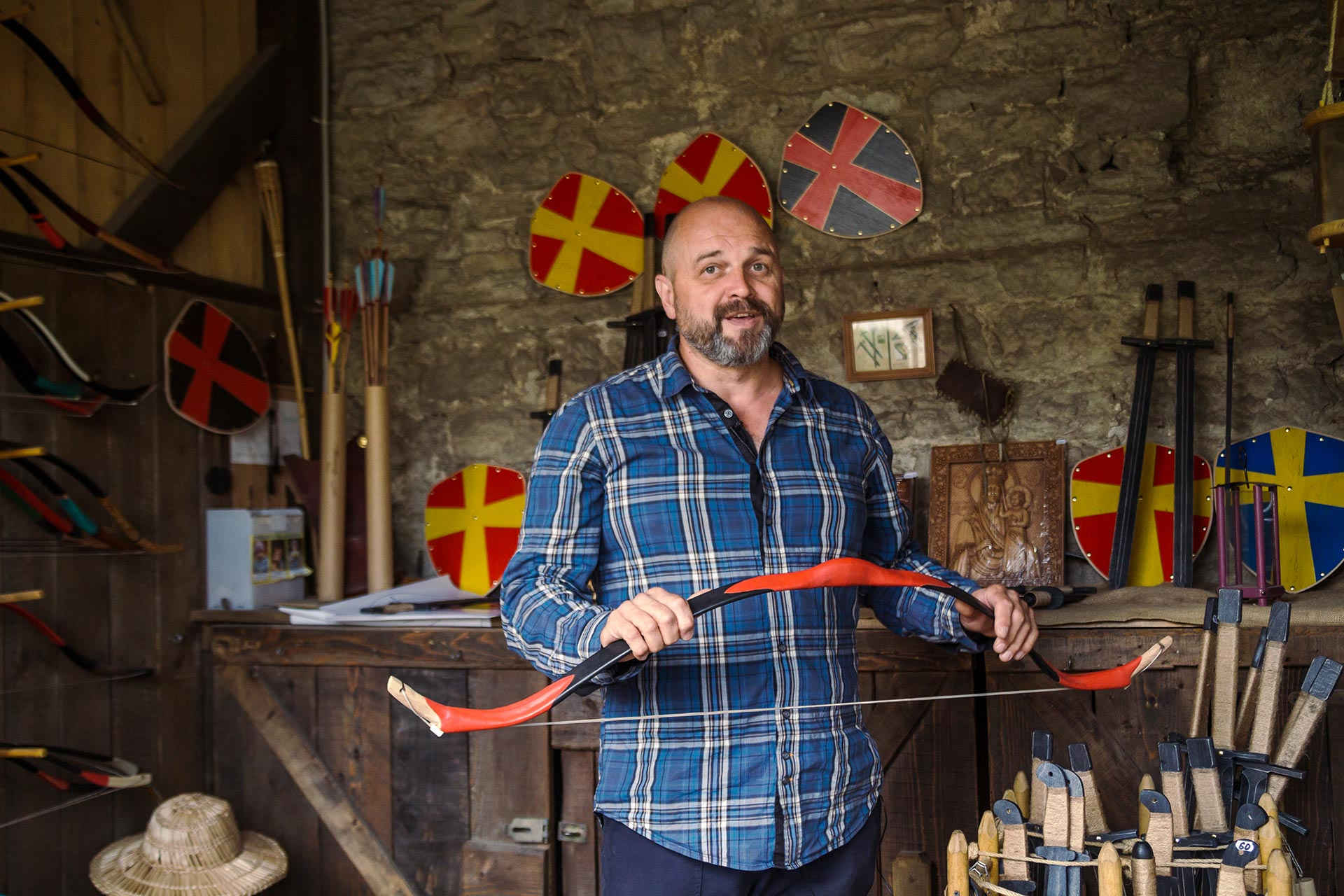
Ihor takes out a quiver (a leather or wooden bag to hold the arrows – author), which, much as the bow and arrows, is custom made. If a horseman shoots a bow, his quiver will be fixed closer to his back, and the arrows have to be inserted with the arrowhead pointing down to avoid hurting the arm in a hurry. However, for the infantry, it’s more convenient to have them arrowhead up.
The process of making a bow is rather fascinating, but Ihor encourages all tourists to shoot it too. He made up his mind a long time ago: you can’t make a bow and not shoot it. The two go hand-in-hand. You can compete in archery in the fortress — there’s a target range on the grounds.
A while ago, Ihor was asked how to shoot properly.
— Shooting properly is not about hitting the target. It’s about the correct form. If you do everything right, you’ll hit the target. You don’t want it to happen by chance alone — you want it to be an achievement.
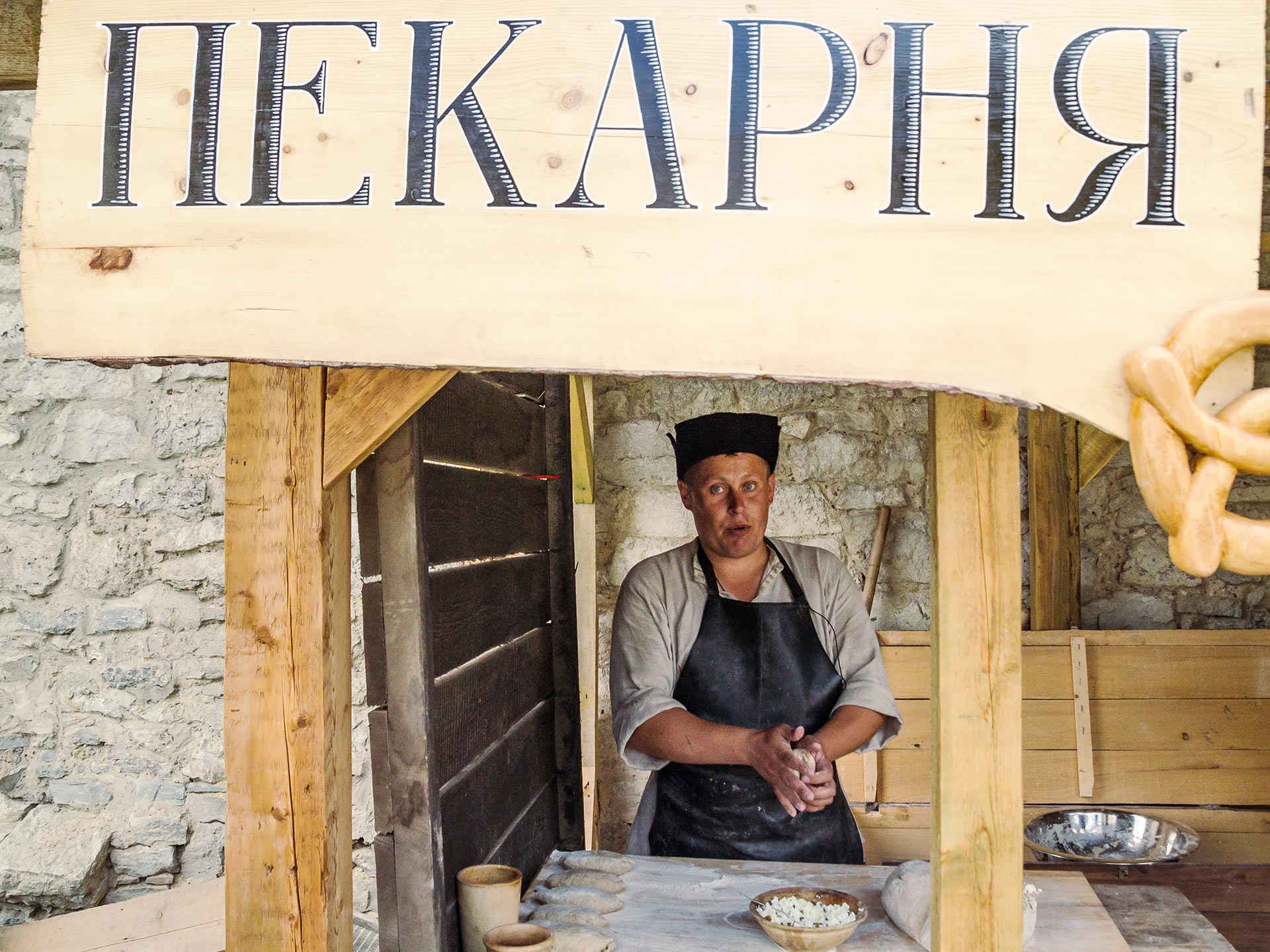
Oleg Shulyk
Six years ago, Oleg Shulyk baked his first loaf of bread. Initiated by the senior reenactor, Oleksandr Zaremba, an idea to try something new and show it to the tourists came about. Having assembled a stove, they set to work. They burned their first loaves, however.
The bread is baked from second rate flour. Oleg doesn’t like the idea of using premium flour, because it turns bread making into a much too simple and mundane procedure. This is how it goes: in the correct order, we mix either whey or sour milk, sugar, rye flour and let the dough ferment. The dough should be kneaded for an hour.
— This is what one old man used to tell us, the same thing that many people used tells us. The older folk would come and say that ‘bread must be kneaded until you sweat blood’. Until you work up a proper sweat, you won’t make any bread. At first, I had my doubts about it. Then I started to knead dough. It’s true that you’ll sweat for an hour and wipe the sweat off your brow many times over.
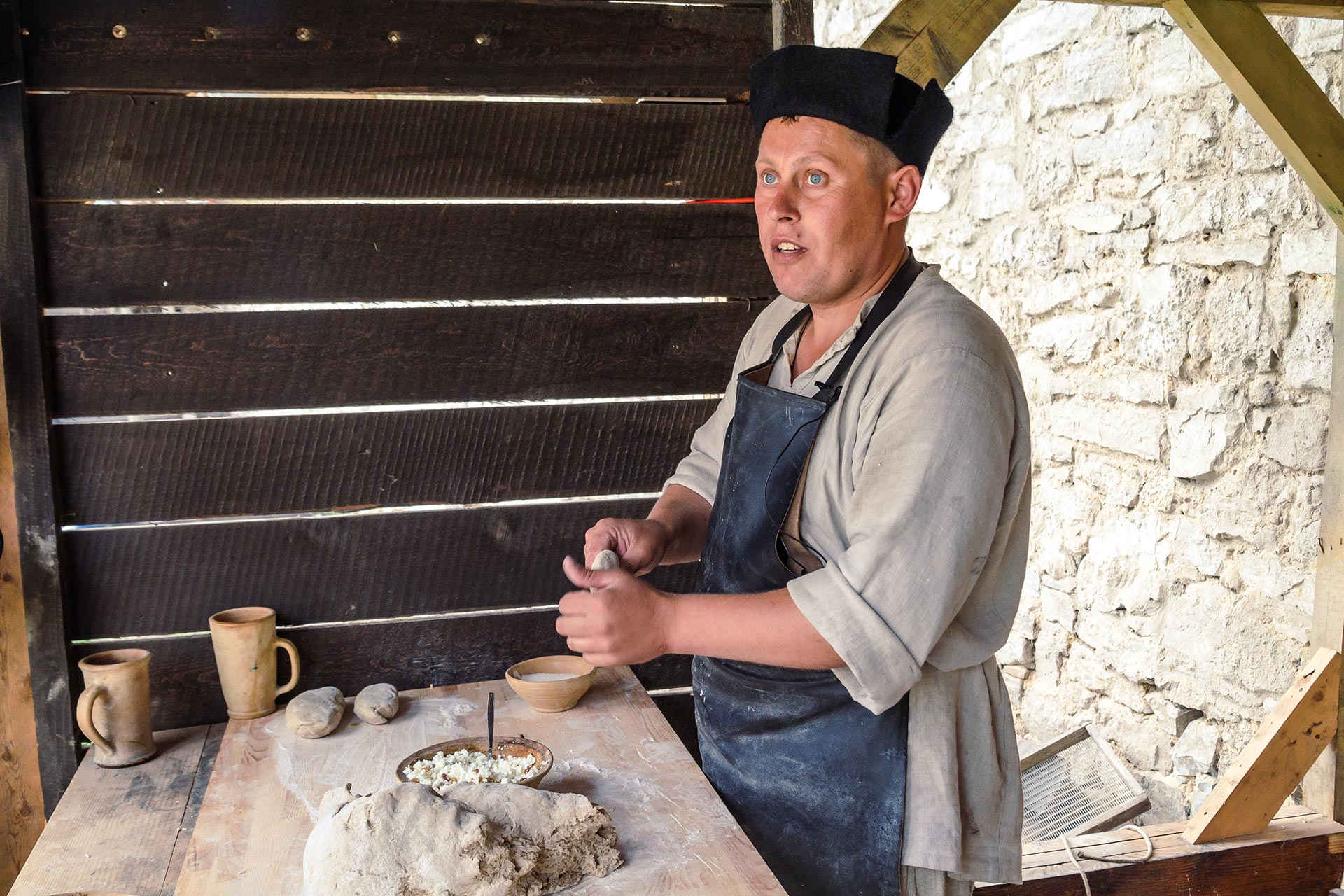
The bread will then bake in an oven for almost as long. There is always a risk that one half may get burnt slightly, as the bottom of the stove is too thin for such procedures. Leaving the bread and going away is not an option. You have to keep an eye on it to prevent burning and move the loaves around regularly.
The first loaf is offered for tourists to have a taste. It’s impossible to slice the bread; it should be broken off or, as Oleg says, peeled. You can taste the difference from the very first bite. Store-bought bread is baked in electric ovens, whereas local bread is baked in a woodfire one. The bread even smells like smoke.
The fortress has a water mill that has been used to ground grain a couple of times. Oleg believes that this is another interesting tourist attraction that brings many visitors of the fortress. The this grain would later be used to bake bread. However, the water mill, like many other elements of the fortress, requires maintenance.
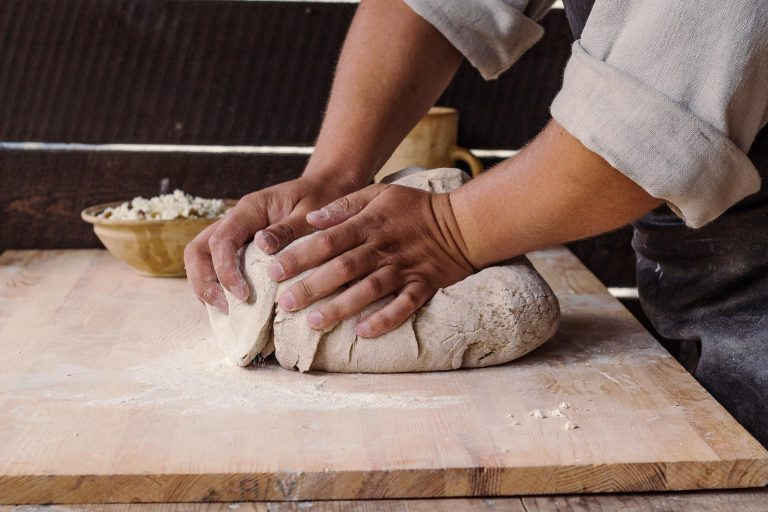
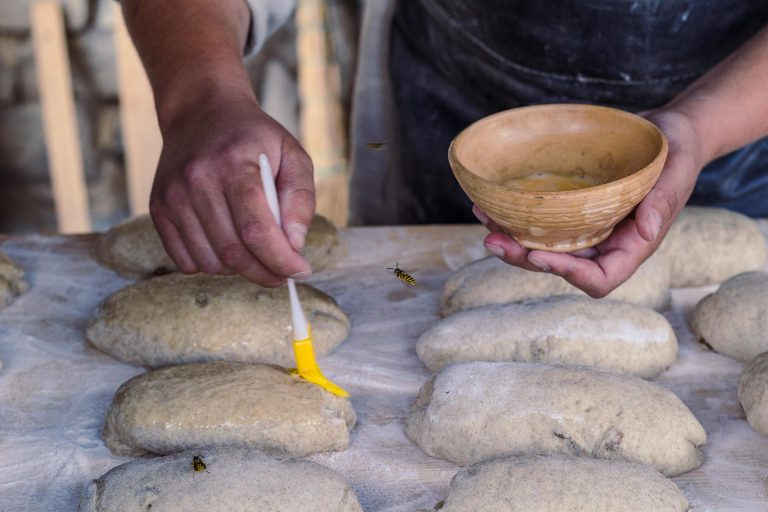
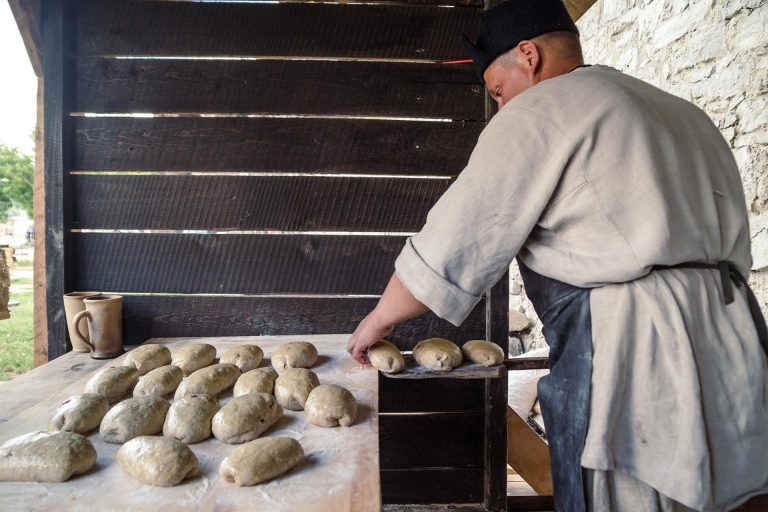
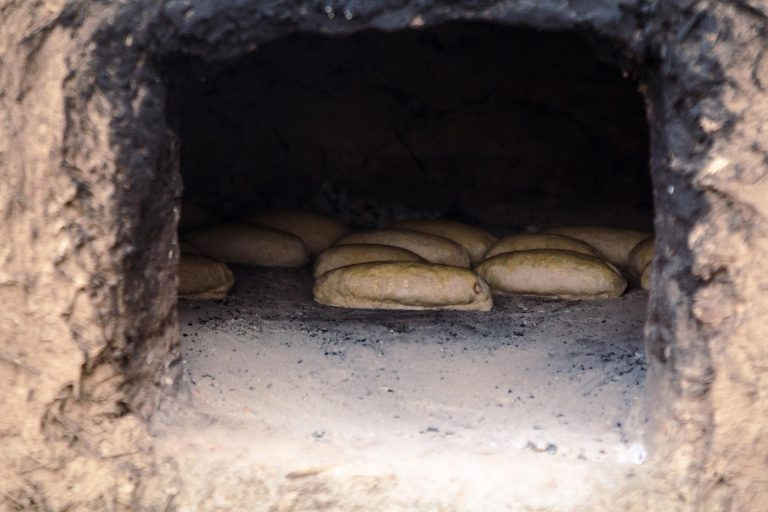
slideshow
Oleg joined the reenactment community after he met another Oleg, the potter. Together with his friends they wore traditional seventeenth century costumes, which drew attention to them. At first, he couldn’t believe his luck in running into them, as it was one of his dreams. Later, he couldn’t believe that joining the reenactment effort was this simple: buy homespun cloth, cut it to size and shape and sew a garment. No additional knowledge or skills required.
Now, Oleg often walks in costumes around the fortress with his namesake potter friend and invites others to take a photo with them. They don’t charge for this service, as they strive to share the history of Podillia and Kamianets-Podilskyi with others first and foremost.
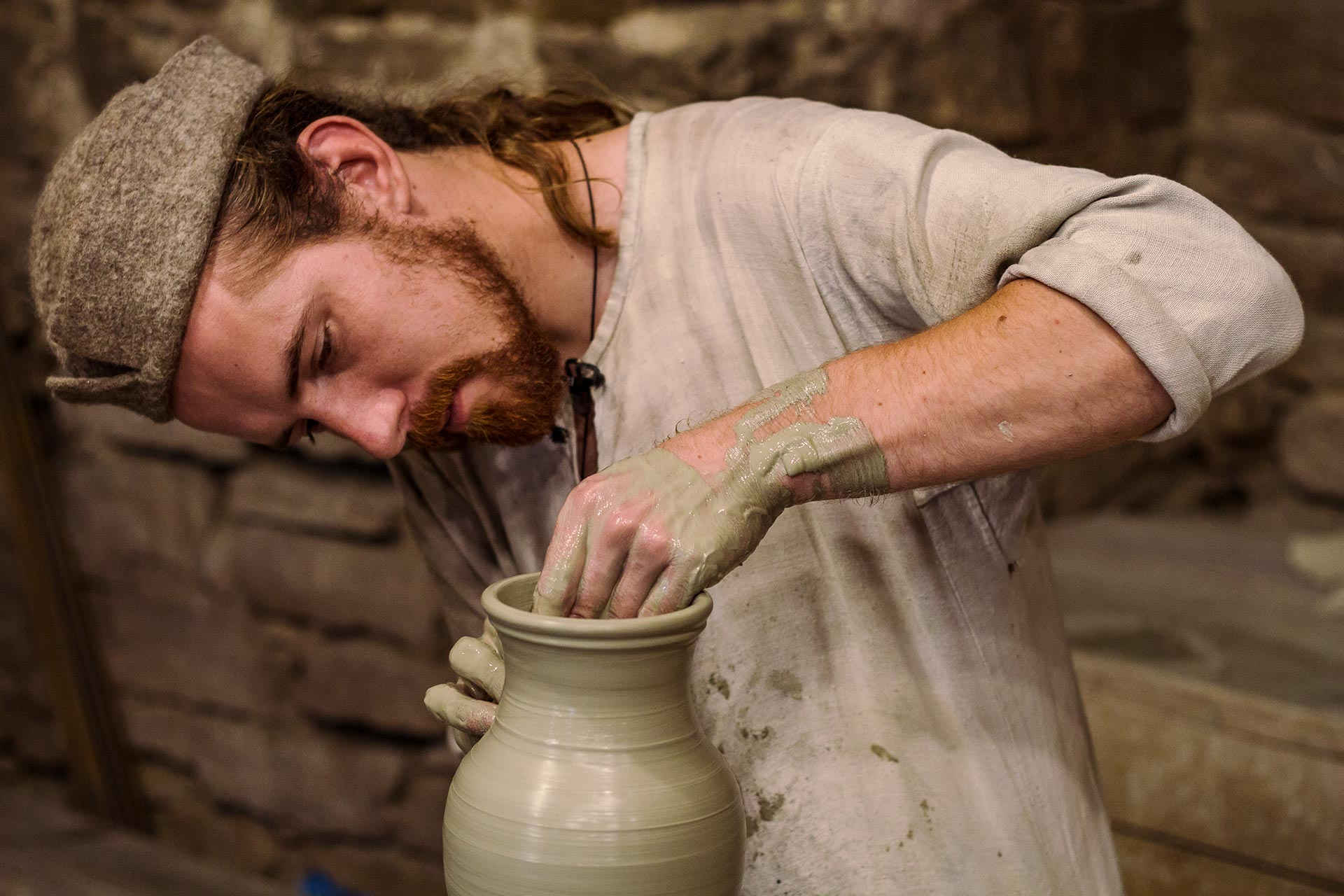
Oleg Khrapan
— Right, put it in the center, hold, watch, now press and pull up a bit. Go on, now pull up once more. Grip and pull up!
Oleg Khrapan is a potter. He has his own workshop in one of the rooms of the fortress, where he organises masterclasses for kids and adults and sells pottery. He provides all of the necessary materials to tourists and asks for one thing only: a desire to create something new and interesting.
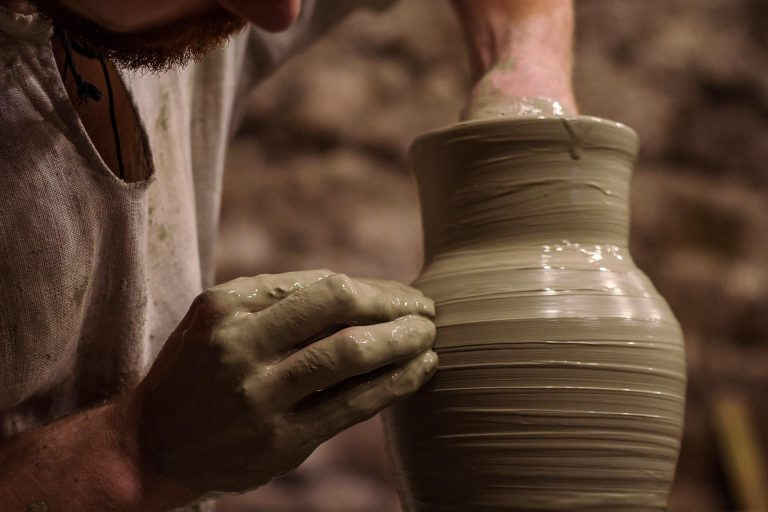
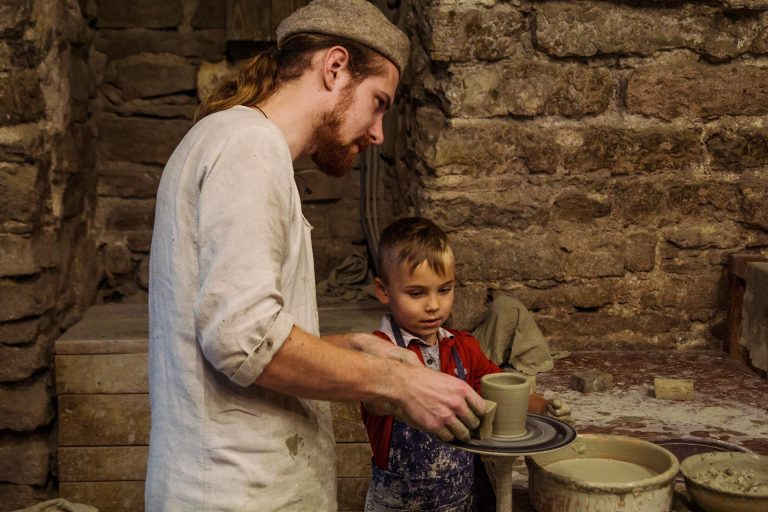
slideshow
Previously, Oleg’s workshop was situated in the canyon next to Ruska Brama — another old settlement, but farther out from the fortress. Few people travel there, and hardly anybody would drop by the place. The craftsman got bored and decided to move to the fortress.
— When it’s winter, there’s no one around, I hardly even work. I turn up, I can have a nap, spend half a day having tea and buns, listen to music, read. I mean, the action starts when there are people around. You want to do something. People visit, ask questions, show their interest, and you go on with a story, arrange classes. That’s when you want to do your job, because you know that someone needs you.
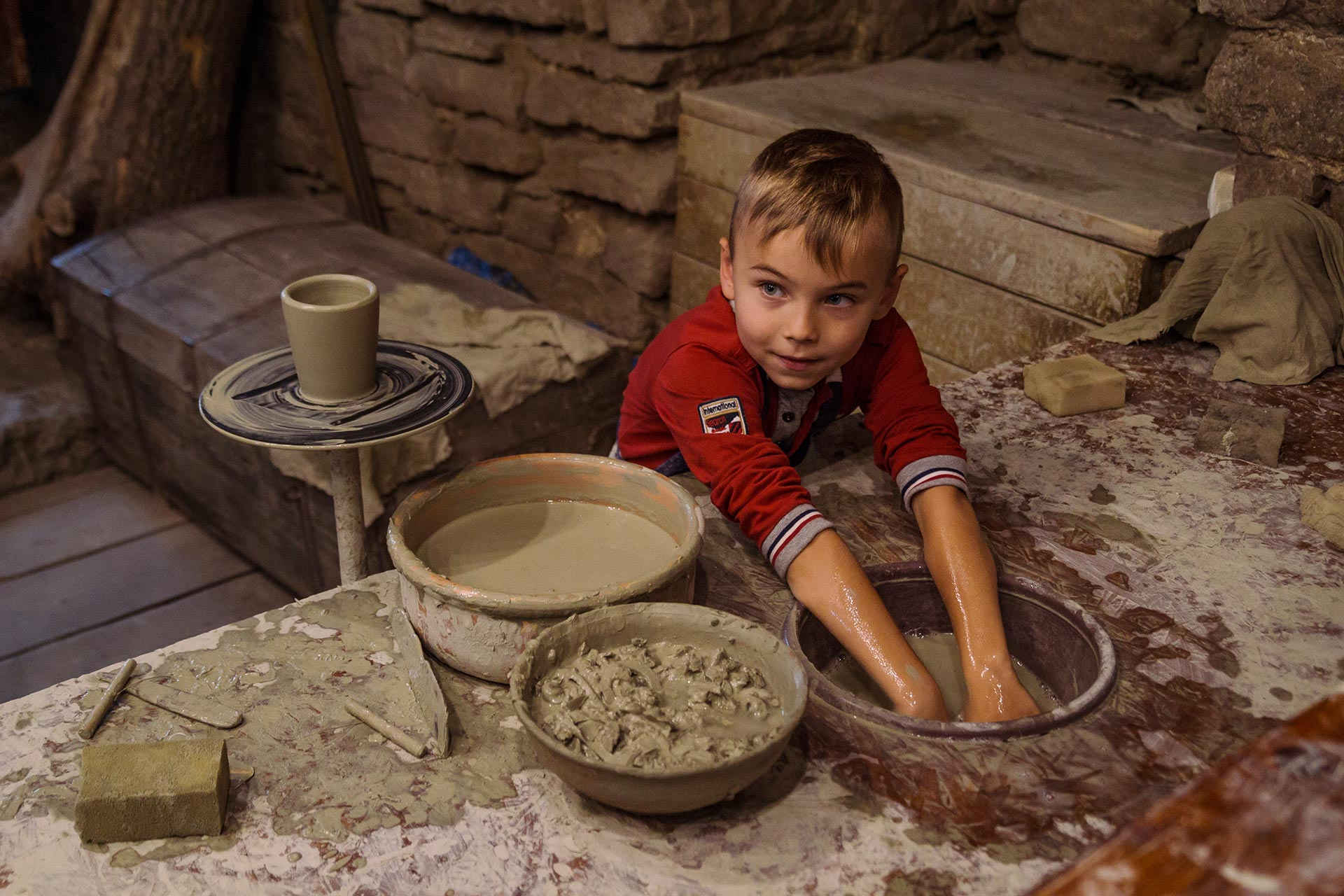
He mastered pottery just about on his own.He does have his first teacher now however — Vasyl from Tovstyi Village on Podillia. He used to tell Oleg: “Don’t leave it before it’s out of the oven”. Any job must be brought to its conclusion.
— And it’s true, I’ve thought to myself a thousand times, why am I doing this. I might drop it, as I earn nothing here, and a man has to provide himself. But when I take out the finished goods from the oven, I have a great feeling. I know that it’s worth it.
Pots are produced in several stages. The clay that potters buy is as solid as a stone, and it doesn’t work well for pottery. It has to be soaked, brought to the consistency of sour cream, passed through a sieve, dried on the shelves and, when it’s dry enough, kneaded. The job is half done at this point.
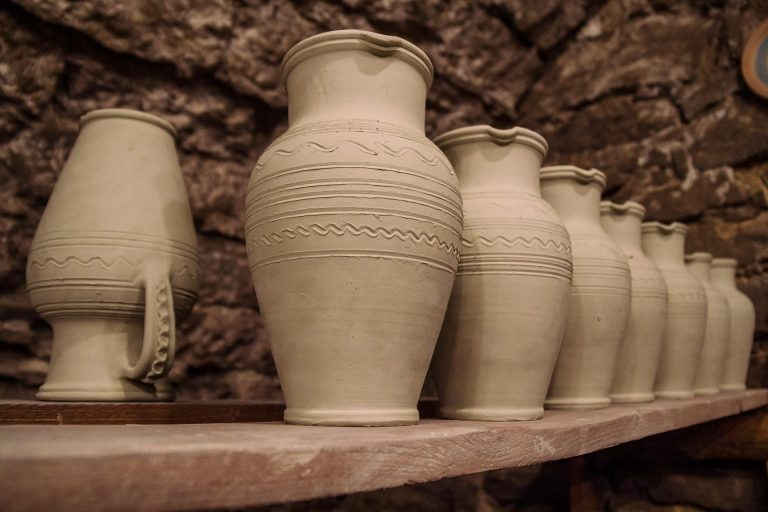
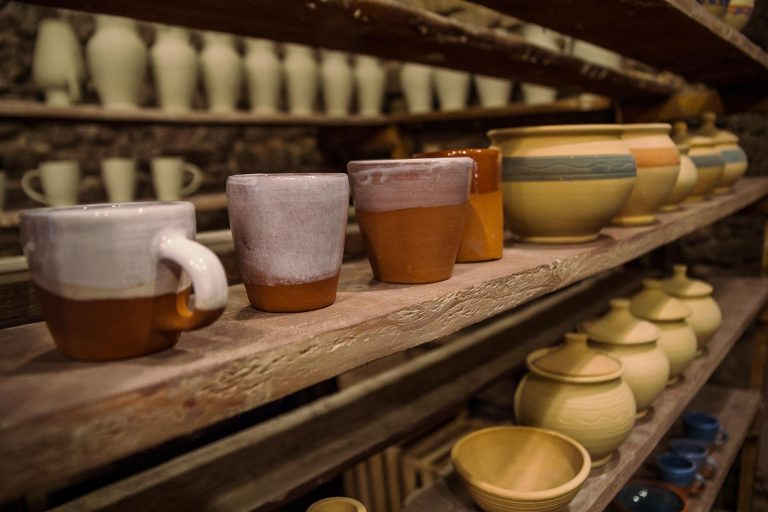
slideshow
The next step is actual molding and baking. A potter continuously wets his hands with water so that the clay will stay malleable and rotates the pottery wheel with his foot. Clay can acquire nearly any form. Ornaments are made with special tools, although a wooden stick is the most common one. To remove a pot or a jug from the pottery wheel without causing any damage, it will be cut using a thread.
Oleg talks about other potters, who live in the villages of Podillia. They don’t have much work. In Domivka and Smotrych, large workshops operated once, but the situation has changed since. Opishnya is now the pottery center.
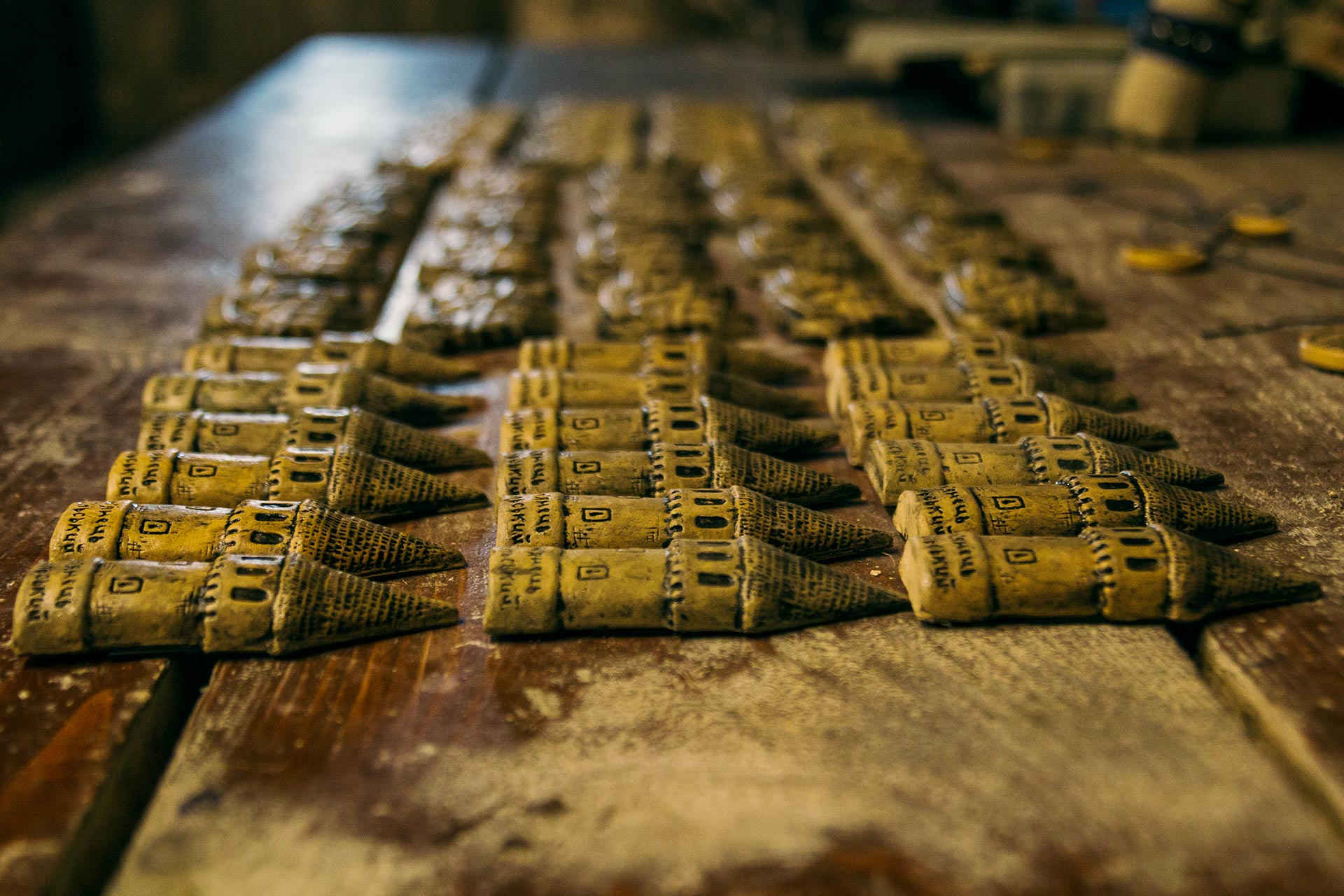
The principle of working with clay remains always the same. Each craftsman employs his own methods, however. When Oleg teaches molding, he shows the basic techniques and methods, then leaves a person alone with the clay. Let their own hands do the job.
— What is clay for me? The process is very creative and spiritual. Besides being skilled, you need love and feeling. Otherwise, if you do the job and that’s it, it’ll be just another craft.
How we filmed
In this vlog we will arrive in Kamianets-Podilskyi, watch the cannonballs fly over the fortress, meet a Crimean migrant Mykola Shapai, see how Kamianets-Podilskyi castle lives, get to motoball training, visit Otrokiv Village and Scibor-Makhotsky farmstead, and, finally, we will end up in the Velyka Yaromyrka village, where an incredible man, Serafim Lesko, has founded his own museum.

